#Brachionichthyidae
Text

RARE FISH SEEN FOR THE FIRST TIME IN THE WILD
Australian researchers have found what is believed to be a narrowbody handfish (Pezichthys compressus) for the first time since 1996.
Narrowbody handfish were first discovered by CSIRO in 1986, and was last seen in 1996, but just in 2009 was identified as a different species. Using ROVs, researchers recorded these small fishes at 292 metres depth, at northeast of Flinders Island in Tasmania. This species is only know from two specimens in the Australian National Fish Collection, collected from deep waters off southeastern Australia.

In life, the is uniformly pale pink, with no evidence of spots or other markings in types, is also small, reaching at least 42.4 millimeters in length. Photo by Last & Gledhill.
These weird fishes are related to the spotted handfish Brachionichthys hirsutus a critically endangered fish, only found in some parts of Tasmania. While nothing is known of the breeding ecology, or the preferred habitat of narrowbody handfish, it is likely that the prolonged trawls and dredge efforts in its habitat has impacted on the distribution and abundance of this species.
#Pezichthys compressus#Pezichthys#handfish#Brachionichthyidae#science#australia#pacific#marine biology#biology#sciblr#scienceblr#bioblr#rov
2K notes
·
View notes
Text

Spotted Handfish (Brachionichthys hirsutus), family Brachionichthyidae, Tasmania, Australia
CRITICALLY ENDANGERED.
photograph by Rick Stuart-Smith / Reef Life Survey
304 notes
·
View notes
Note
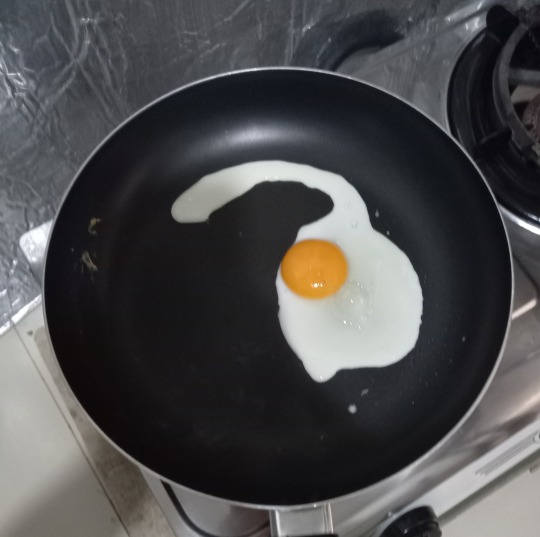
angler fish
The anglerfish are fish of the teleost order Lophiiformes (/ˌlɒfiɪˈfɔːrmiːz/).[1] They are bony fish named for their characteristic mode of predation, in which a modified luminescent fin ray (the esca or illicium) acts as a lure for other fish. The luminescence comes from symbiotic bacteria, which are thought to be acquired from seawater,[2][3] that dwell in and around the sea.
Some anglerfish are notable for extreme sexual dimorphism and sexual symbiosis of the small male with the much larger female, seen in the suborder Ceratioidei, the deep sea anglerfish. In these species, males may be several orders of magnitude smaller than females.[4]
Anglerfish occur worldwide. Some are pelagic (dwelling away from the sea floor), while others are benthic (dwelling close to the sea floor). Some live in the deep sea (such as the Ceratiidae), while others live on the continental shelf, such as the frogfishes and the Lophiidae (monkfish or goosefish). Pelagic forms are most often laterally compressed, whereas the benthic forms are often extremely dorsoventrally compressed (depressed), often with large upward-pointing mouths.[citation needed]
Evolution[edit]
The earliest fossils of anglerfish are from the Eocene Monte Bolca formation of Italy, and these already show significant diversification into the modern families that make up the order.[5] Given this, and their close relationship to the Tetraodontiformes, which are known from Cretaceous fossils, they likely originated during the Cretaceous.[6][7] A 2010 mitochondrial genome phylogenetic study suggested the anglerfishes diversified in a short period of the early to mid-Cretaceous, between 130 and 100 million years ago.[8] A more recent preprint reduces this time to the Late Cretaceous, between 92 to 61 million years ago.[7] Other studies indicate that anglerfish only originated shortly after the Cretaceous-Paleogene extinction event as part of a massive adaptive radiation of percomorphs, although this clashes with the extensive diversity already known from the group by the Eocene.[7][9]
Classification[edit]
FishBase,[1] Nelson,[10] and Pietsch[11] list 18 families, but ITIS[12] lists only 16. The following taxa have been arranged to show their evolutionary relationships.[4]
Suborder Lophoiodei
Lophiidae (goosefishes or monkfishes)
Suborder Antennarioidei
Antennariidae (frogfishes)
Tetrabrachiidae (four-armed frogfishes)[13]
Brachionichthyidae (handfishes)
Lophichthyidae (Boschma's frogfish)[13]
Suborder Chaunacoidei
Chaunacidae (sea toads)
Suborder Ogcocephaloidei
Ogcocephalidae (batfishes)
Suborder Ceratioidei
Centrophrynidae (prickly seadevils)
Ceratiidae (warty seadevils)
Himantolophidae (footballfishes)
Diceratiidae (doublespine seadevils)
Melanocetidae (black seadevils)
Thaumatichthyidae (wolf-trap seadevils)
Oneirodidae (dreamers)
Caulophrynidae (fanfin seadevils)
Neoceratiidae (needlebeard seadevil)
Gigantactinidae (whipnose seadevils)
Linophrynidae (leftvent seadevils)
Red-lipped batfishStriped anglerfish (Antennarius striatus
1 note
·
View note
Photo

4 notes
·
View notes
Text
Handfish!
The Handfish are a type of anglerfish in the family Brachionichthyidae which has 14 extant species
They are super cool because as the name suggest they use their fins as hands and often walk around on the ocean floor instead of swimming
If you have read this far why not follow us @animalfacthub for daily animal facts and pics!
-
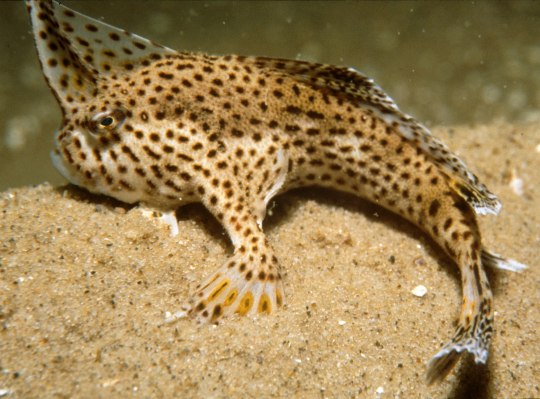
📷1: “CSIRO ScienceImage 10 The Endangered Spotted Handfish.jpg” by CSIRO on Wikimedia Commons (CC-BY 3.0)

📷2: “Brachionichthys hirsutus RLS.jpg” by Rick Stuart-Smith on Wikimedia Commons (CC-BY 3.0)

📷3: “Sympterichthys politus.jpg” by R. Kuiter on Wikimedia Commons (CC-BY 2.0)
60 notes
·
View notes
Text
Factoide #3723
(#3723) El pez rosado con manos
Utiliza sus aletas para caminar, más que para nadar, a lo largo del fondo del océano en esta foto sin fechar. El pez rosado con manos (Brachiopsilus dianthus) es una de las nueve especies recién nombradas descritas en una reseña científica de la familia de los peces con manos (Brachionichthyidae). Solo se han encontrado cuatro especímenes de este escurridizo pez rosado con manos, de 10 centímetros, y todos en la zona cercana a la isla de Hobart, en la isla Australiana de Tasmania.
Aunque nadie ha visto un pez rosado con manos desde 1999, los científicos han tardado años en identificarla como una nueva especie. Las 14 especies conocidas de pez con manos se encuentran solo en las aguas poco profundas del sureste de Australia. Estos peces están poco estudiados y se sabe poco sobre su biología o su conducta.
gracias a Angélica Dávila por el aporte

[Publicado originalmente el 20 de Enero del 2022]
0 notes
Text
Observation of the Week, 5/18/18
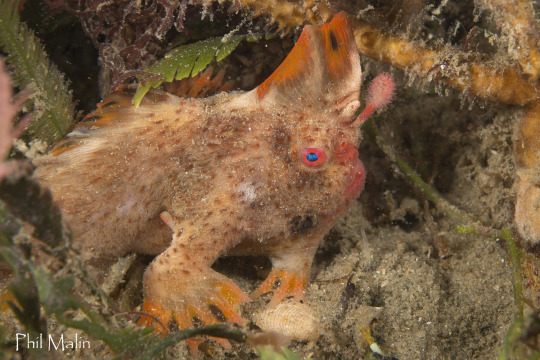
Our Observation of the Week is the first Red Handfish (and only Handfish) posted to iNaturalist! It was seen off of Tasmania by acanthaster.
“Learning to dive was without a doubt one of the best decisions of my life and has taken my love for the natural world to a whole new level underwater,” says Phil Malin (@acanthaster). “The incredible interactions that you can have with a multitude of species on every dive never gets old for me.” And part of Phil’s diving experience has been searching for and photographing the rare handfish.
Handfish - members of the family Brachionichthyidae - are actually a type of anglerfish, the deep sea versions of which have become justifiably famous for their strange appearance and for the “lures” they use to attract prey. You can clearly see this structure in Phil’s photo, but the organs that give handfish their names - both common and scientific - are of course the amazing hand-like pectoral fins. While a handfish can use its tail to swim in short bursts, it relies on the pectoral fins to “walk” along the seafloor where it lives. Because these fish are mainly sedentary and don’t move very far, they usually live in small population clusters. In fact, a new population of Red Handfish were recently discovered off of Tasmania, doubling the known world population to a total of around eighty individuals. Handfishes live exclusively in the Australian region.
Being such a rare type of fish, handfish have been a sought after species for Phil to photograph. In 2008, he and a friend “spent an uncomfortable 80 mins diving in a cold, dirty river and I actually managed to photograph [a Spotted Handfish]. At the time, there were almost no photos of this species, so this was quite a find for me to photograph.”
He was able to photograph a Red Handfish in 2010 (see below) with the help of a friend and a woman who works with the fish, and
Since then, I have followed the usual progression as a semi-serious underwater photographer to upgrade my equipment to something with a much higher resolution and have been keen to head back and shoot the Red Handfish again. A few weeks ago I finally managed to find some time down in Tasmania to go for my Handfish hunt. Thankfully I managed to find one about 15 minutes into the dive, when I was still warm and functional. The conditions were very good, so this shot is substantially better than my last effort. Once you manage to hit them with enough light, their eyes glow a beautiful gem blue colour, which I think looks incredible. My next challenge is to re-shoot the Spotted Handfish in a higher resolution too.

Phil began to upload some of his fantastic fish photos to iNaturalist after Mark McGrouther (@marckmcg), who runs the Australasian Fishes project on iNat, suggested he do so.
I am a regular diver on a part of the Australian coastline that doesn’t really have a lot of good observational data in the last decade, so I felt that I should start putting some of my photos to good use. iNaturalist has certainly made me more focussed on certain dives where I am attempting to shoot one of everything for a local species list. It is amazing how some common species that I usually don’t attempt to photograph are actually incredibly hard to shoot well. The Eastern Wirrah is a classic example of this. Challenges like this now inspire me to try and shoot good ID profile shots of these species as cleanly as possible.
I think citizen science projects such as iNaturalist will play an important role heading forward as climate change really starts to make a significant impact on species distribution. I am hoping I can continue to make a contribution in this space for many years to come.
- by Tony Iwane
- Check out this short video about the discovery of this new Red Handfish population.
- The Australasian Fishes project has been a great boon for iNat participation in Australia. Look at the growth of Australian observations after it got started in 2016! If you’re an underwater photographer, we’d love to have more fish photos!

4 notes
·
View notes
Photo

@friel: Behold the Red #Handfish (#Thymichthys politus). A benthic anglerfish in the family #Brachionichthyidae known only from the Port Arthur region to Marion Bay, #Tasmania. It is one of the #rarest #fish species in the world. #FishFacts https://t.co/IHPV3spTZj https://t.co/0Y6CdA4Xug https://t.co/JtCYaFRRa1
0 notes
Text
Organism of the Week - Spotted Handfish
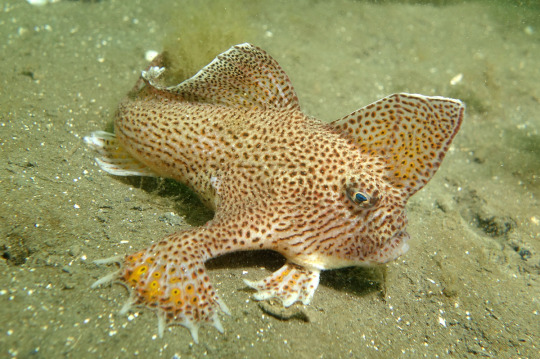
The spotted handfish or scientifically, the Brachionichthys hirsutus, is in the Animalia kingdom, Chordata phylum, Actinopterygii class, Lophiiformes order, Brachionichthyidae family, and Brachionichthys genus.
The spotted handfish is described as a type of anglerfish recognized by their hand-like fins allowing them to walk on the ocean’s floor. Their hand-like fins include their pectoral and ventral fins. To swim, they use their anal and tail fins, however, it only occurs rarely. They are pinkish above and white below with each handfish covered in unique patterns of dark, brown, or blackish spots. On their ‘pear-shaped’ body, they are covered with small, tooth-like scales which are called denticles. Their body length is about 6 inches (15.24 centimeters) in length. Spotted handfish are carnivores with a diet consisting of shrimps, amphipods, worms, and small fish. To lure their prey, they use esca which is a fleshy structure on their front dorsal fin that is modified into long filament and they quickly suck in their prey.
The spotted handfish is found in south-eastern Australia in the lower Derwent River from where the tide meets the stream in Tasmania. They are a benthic species meaning their habitat is at the bottom of the water. They are found in coastal waters on coarse to fine sand and silt at depths of 2 to 40 meters.
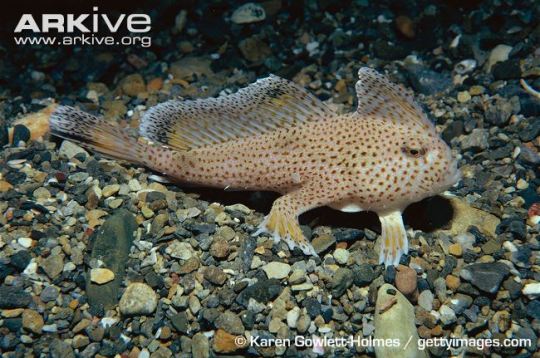

The spotted handfish breeding season occurs from September to October. Reproduction begins by a male performing courtship rituals to attract females. The female then lays around 80 to 250 eggs on sea squirts, seaweed, or sponges. The female guards the eggs for about 7 to 8 weeks until the handfish hatch and settle on the sea floor as fully developed juveniles, measuring about 6 to 7 millimeters. At 2 to 3 years old, they become sexually mature.
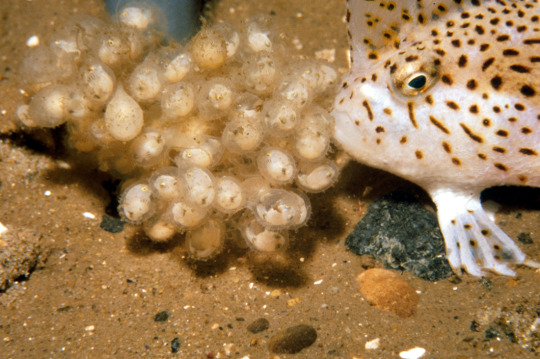
Fun Fact: The spotted handfish is one of the world’s most endangered marine fish, listed as ‘critically endangered’ on the IUCN Red List.
http://www.arkive.org/spotted-handfish/brachionichthys-hirsutus/
https://australianmuseum.net.au/spotted-handfish-brachionichthys-hirsutus-lacepede-1804
http://www.softschools.com/facts/animals/spotted_handfish_facts/1935/
1 note
·
View note
Photo

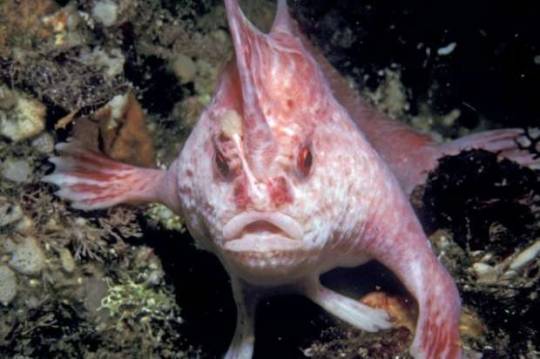
AFamily Brachionichthyidae
(Handfish)
Handfish are a group of anglerfish classified by their unusual method of walking along the sea floor instead of swimming. Unsurprisingly they are found off the coasts of Australia and Tasmania. They like most anglerfish are fairly small as they only grow up to 6 in long. as i said before they walk along the sea floor using highly modified pectoral fins which look similar to hands, they also have an illicium but do not use it as a lure.
Phylogeny
Animalia-Chordata-Actinopterygii-Lophiiformes-Brachionichthyidae
Source,Source
#Brachionichthyidae#Chordata#Handfish#anglerfish#animals#biology#evolution#zoology#Actinopterygii#Lophiiformes
166 notes
·
View notes
Photo

Pink Handfish (Brachionichthyidae)
Only four specimens of this fish has ever been discovered. It was last sighted over 10 years ago.
#Brachionichthyidae#Handfish#Pink#Pink Handfish#Rare#Sea#Australia#Ocean#Water#Sealife#animal#nature
17 notes
·
View notes
Text

Red Handfish (Thymichthys politus), family Brachionichthyidae, Tasmania, Australia
CRITICALLY ENDANGERED.
photograph by acanthaster
199 notes
·
View notes
Photo


The spotted handfish (Brachionichthys hirsutus), an amazing creature that walks the ocean floor, is a rare Australian fish from the family Brachionichthyidae. It is classified as Critically Endangered on the IUCN Red List 2002. is the first Australian marine species to be threatened with extinction.
The greatest threats to the handfish appear to be siltation and invasive species. The Derwent Estuary where the fish lives is highly urbanised and industrialised, and a range of marine pests have been introduced through shipping. One key pest is the Northern Pacific Seastar (Asterias amurensis), a particularly large and voracious predator that is now abundant in the estuary. Studies by CSIRO show that the seastars eat the stalked ascidians that the handfish use to attach their eggs.
video CSIROpublishing
#Lophiiformes#Brachionichthyidae#actinopterygii#animals#gif#handfish#Brachionichthys hirsutus#science#australia#critically endangered#endangered#Asterias amurensis#Northern Pacific Seastar#echinoderm#seastar#asteroidea#marine biology#biology
4K notes
·
View notes